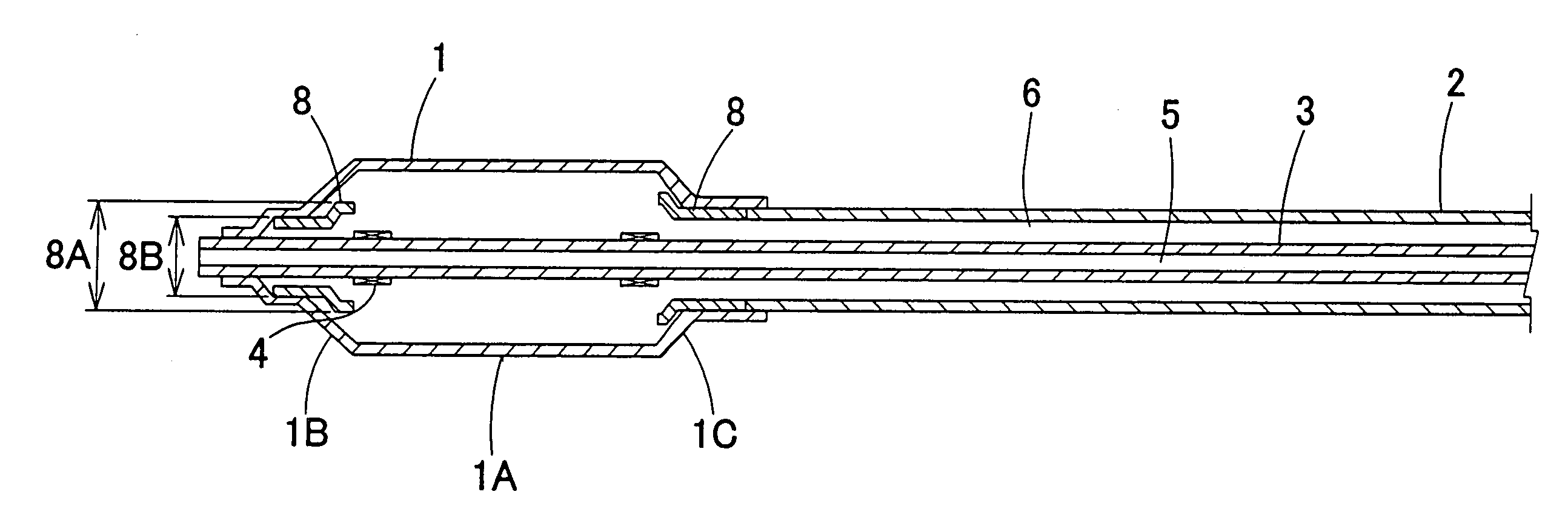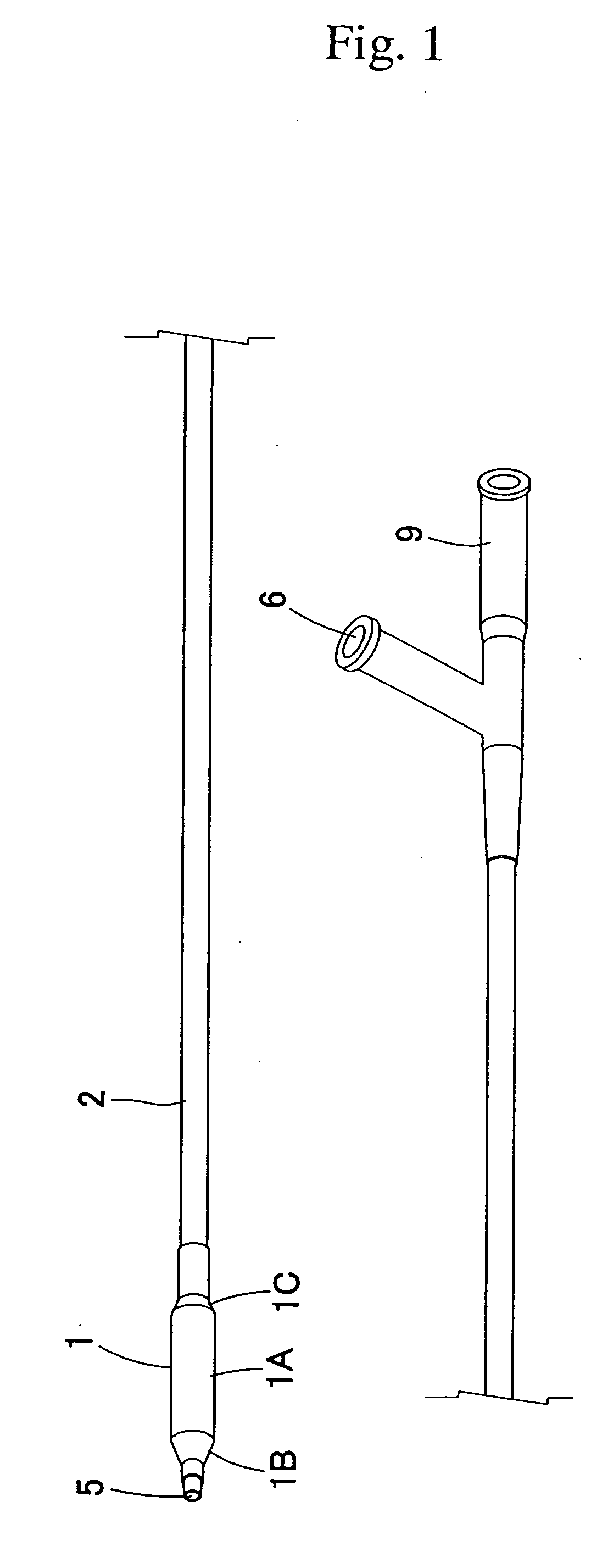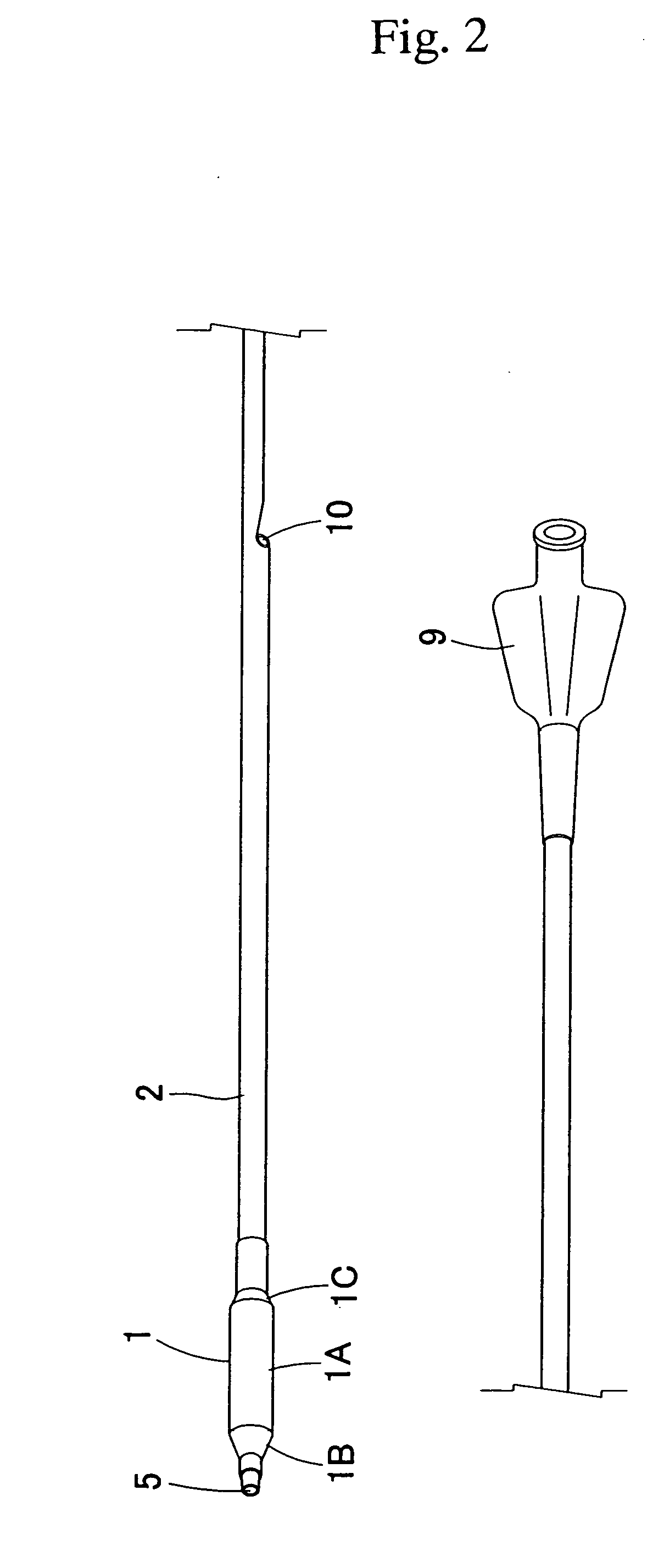Stent delivery catheter
a technology of stent and catheter, which is applied in the field of stent delivery catheter, can solve the problems of insufficient expansion high probability of restnosis at the narrowed area, and increase the thickness of the stent at this portion, so as to effectively prevent the stent 11 from moving or falling, and increase the outer diameter
- Summary
- Abstract
- Description
- Claims
- Application Information
AI Technical Summary
Benefits of technology
Problems solved by technology
Method used
Image
Examples
example 2
[0098] A sample was prepared as in EXAMPLE 1 except that the outer tube was used as the displacement prevention mechanism at the proximal end of the balloon.
example 3
[0099] A sample was prepared as in EXAMPLE 1 with the exception of the following. The same tubular member as in EXAMPLE 1 was used as the displacement prevention mechanism at the distal end of the balloon. The outer diameter of the tubular member was increased to 1.20 mm, and the portion with the increased outer diameter was extended into the balloon tapered segment at the distal end of the balloon. The same tubular member as in EXAMPLE 1 was used as the displacement prevention mechanism at the proximal end of the balloon. The outer diameter of one end of the tubular member was increased to 1.20 mm, and the portion with the increased outer diameter was extended into the balloon tapered segment at the proximal end. Moreover, the inner diameter of the portions of the balloon jointed with the displacement prevention mechanisms was adjusted to 1.25 mm.
[0100] A sample was prepared as in EXAMPLE 1 with the exception of the following. A radiopaque marker (inner diameter: 0.83 mm, outer dia...
example 5
[0102] A sample was prepared as in EXAMPLE 1 except for the following. The same tubular member (first tubular member) as in EXAMPLE 1 was used to form each of the displacement prevention mechanisms at the distal and proximal ends of the balloon. Another tubular member (second tubular member, inner diameter: 0.95 mm, outer diameter: 2.00 mm) prepared by extrusion molding using a polyamide elastomer (trade name: PEBAX7033SA01, manufactured by Elf Atochem) was joined to one end of each first tubular member by melt bonding. The jointed portions were placed in tapered segments at the distal and proximal ends of the balloon, respectively. The inner diameter of the jointed portions of the balloon jointed with the displacement prevention mechanisms were adjusted to 2.05 mm.
PUM
 Login to View More
Login to View More Abstract
Description
Claims
Application Information
 Login to View More
Login to View More - R&D
- Intellectual Property
- Life Sciences
- Materials
- Tech Scout
- Unparalleled Data Quality
- Higher Quality Content
- 60% Fewer Hallucinations
Browse by: Latest US Patents, China's latest patents, Technical Efficacy Thesaurus, Application Domain, Technology Topic, Popular Technical Reports.
© 2025 PatSnap. All rights reserved.Legal|Privacy policy|Modern Slavery Act Transparency Statement|Sitemap|About US| Contact US: help@patsnap.com



